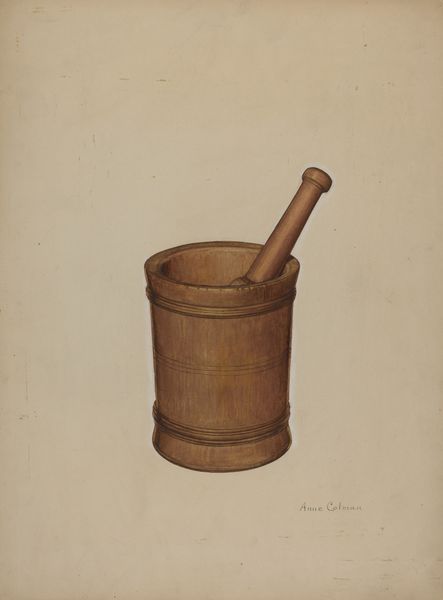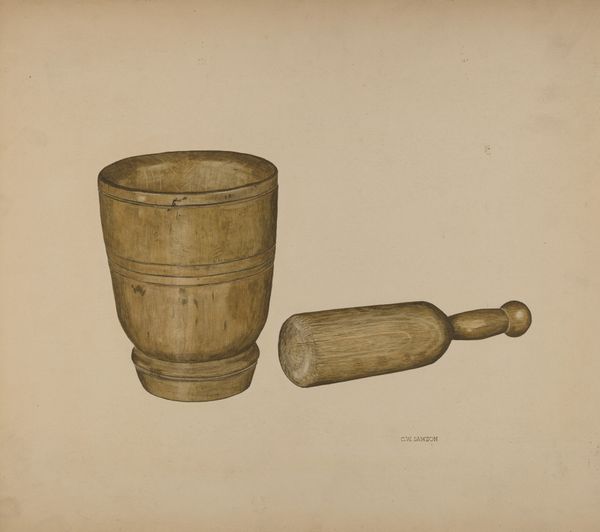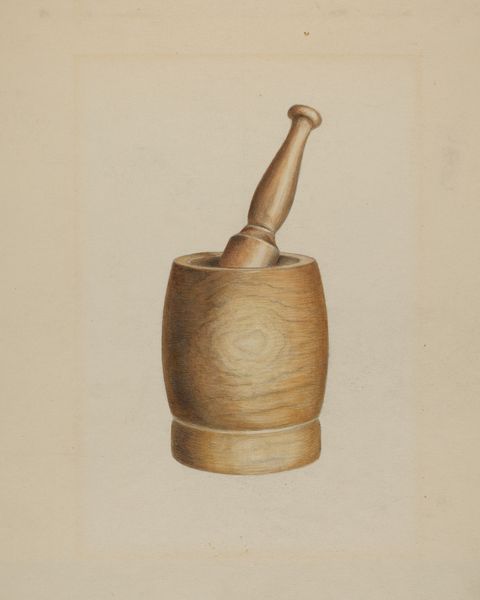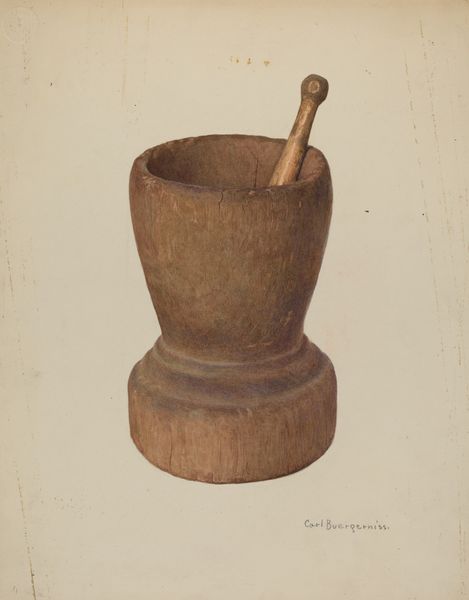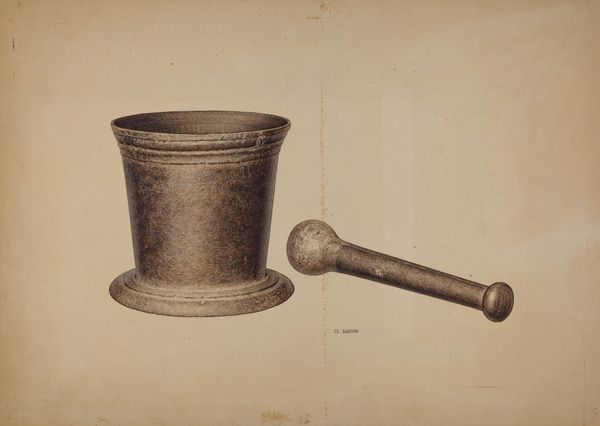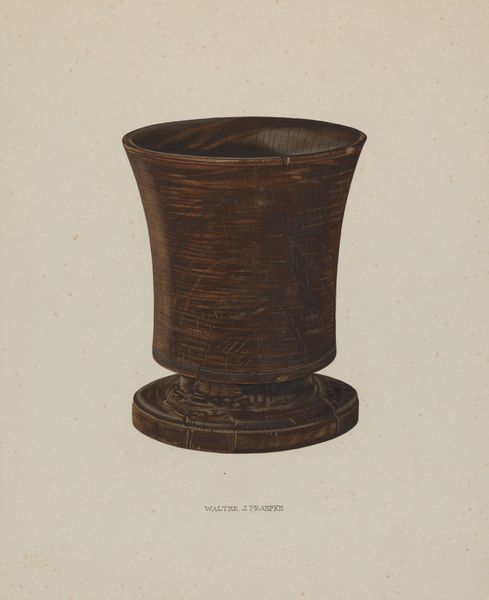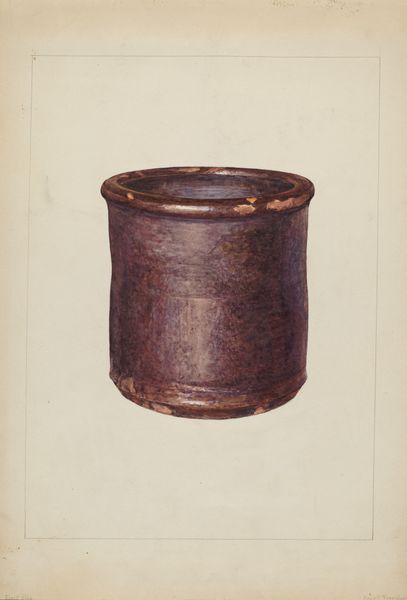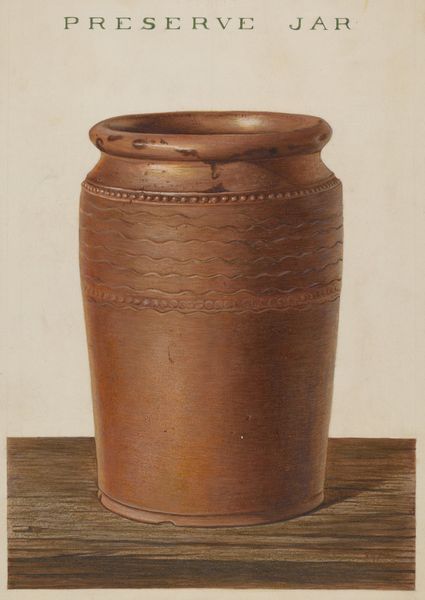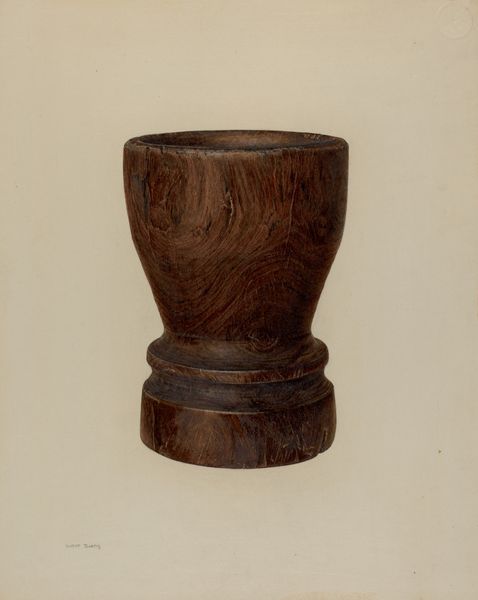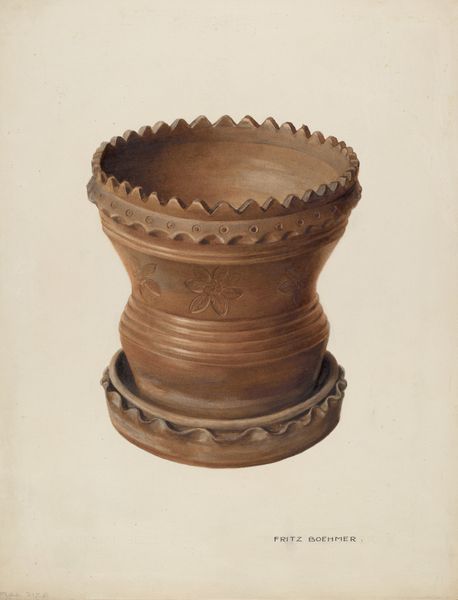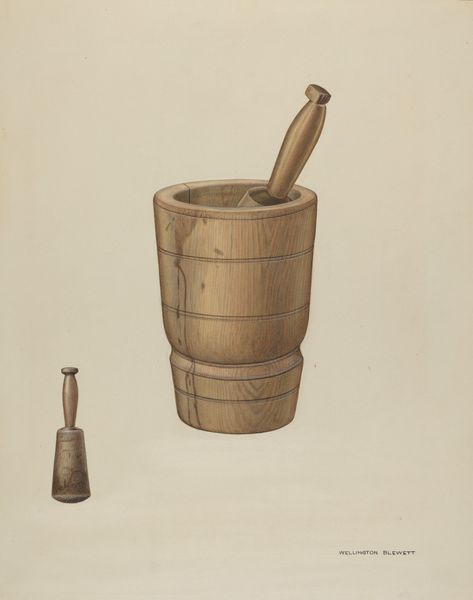
drawing, pencil, graphite
#
drawing
#
charcoal drawing
#
pencil
#
graphite
#
academic-art
#
realism
Dimensions: overall: 29.1 x 36 cm (11 7/16 x 14 3/16 in.) Original IAD Object: 6 1/8" high; 5 13/16" in diameter
Copyright: National Gallery of Art: CC0 1.0
Curator: Hester Duany's "Mortar and Pestle," rendered circa 1940, offers a humble yet captivating subject. I’m particularly interested in its connection to domesticity, labor, and even resistance through the preservation of culinary traditions. What's your initial reaction to it? Editor: The texture immediately grabs my attention. Notice how the light catches the wood grain; it’s meticulously observed, giving volume to the forms. The subtle tonal gradations really evoke a sense of tangible reality. Curator: Precisely. We must remember, during the mid-20th century, when this was made, depictions of the everyday took on a specific power. This drawing memorializes an object fundamental to food preparation and, by extension, to family and community well-being. Considering Duany's gender, is she perhaps celebrating domestic artistry that is commonly unacknowledged by broader audiences? Editor: An intriguing point. From a purely formal perspective, it's the use of graphite and pencil that makes the wood grain so compelling. It speaks to a very particular set of drawing conventions. I do find the way it is positioned slightly unnerving as if there’s a slight shift in perspective disrupting a straightforward reading of the forms in relation to each other. Curator: That unsettling element invites a broader exploration. During this period, many communities faced cultural disruption. Representing such an ordinary object with careful consideration could, in turn, make it read as a preservation act, one filled with ancestral significance that moves beyond purely aesthetic representation. It becomes charged. Editor: Perhaps, and still, notice the subtle shadows. Duany masterfully uses them to ground the objects and create depth on the surface. The precision with which each form is rendered testifies to her ability in terms of technical proficiency. Ultimately it presents such simplicity of form and precision that moves beyond social representation, and instead invites one to see beauty within the ordinary. Curator: I concede to the talent of this drawing—what may initially present as humble and rudimentary ends up revealing a deep knowledge of visual craft with strong cultural connotations that cannot be extracted. It is the intersection between form and cultural content that interests me most. Editor: Indeed, it's precisely those layered interactions that make analyzing this artwork so worthwhile, an almost simple setup yet imbued with cultural context and history that unfolds itself with careful looking.
Comments
No comments
Be the first to comment and join the conversation on the ultimate creative platform.

